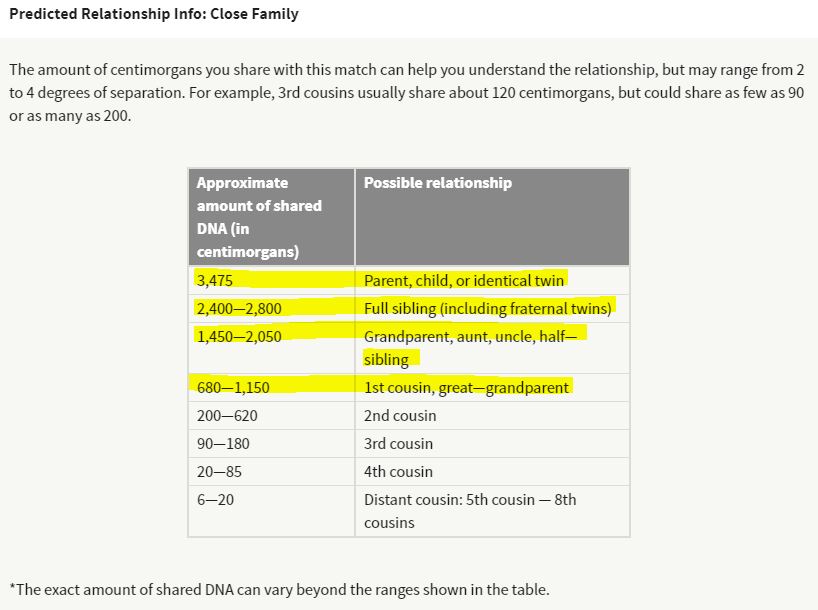Announcements, Search Information
How to start on your own?
If you have either begun your search or want to do it all yourself, here is a handy guide of how to handle your DNA submissions and researching for your family tree.
Before you begin, familiarize yourself in the world of genealogy and genetic genealogy. A good resource and place to start is over at the DNATestingGuides.com and their The Ultimate Beginner’s Guide to Genealogy.
Step 1: DNA Testing
This should always be the initial step to finding a family member because DNA doesn’t lie. The major DNA testing companies have such large databases that your chances of discovering those who match with you are high and likely. In order of priority, you should test at:
- Ancestry DNA
- 23 and Me
- Family Tree DNA
- MyHeritage
- Extract your Raw DNA Data from Ancestry and upload this file to GEDMatch
- Extract your Raw DNA Data from 23andMe and upload this file to GEDMatch as well
For the advanced user, I invite you to also explore the DNA Painter website to learn all of the neat tools they have.
Step 2: Collecting and Organizing Data
While waiting for the DNA tests to finish their results, you should start to gather and log the information that you know. Make a list of information that you were told or remember. This should include any information on the mother and father (if you know that). Be sure to include any information on birth dates and locations, work history, military history, death info, education or even other relatives.
This step is critical because it helps you record your memories that may help in your research later. Small details might not seem significant, but could help you connect the dots, so be sure to list any and all information you know or can remember. It can either be done on paper, but if you have it available, can be done on a computer or mobile device as well. We use this Standard Client Template to log client information.
- If you are the Veteran, begin by recording your name (legal and any nick names), date and place of birth, military info such as branch, the dates and locations you served, your rank and duties. If you know any info on the potential mother and/or child, also record this. Also, include your past and current phone numbers and addresses, and any other details that may help you on your search. Be sure to gather any photos of you as a young military service member, and if you have any photos of your time in the service, or perhaps the mother and child you are seeking. Be sure to write important details on the backs of these photos, or if scanned digitally, include this information with the photos.
- If you are the Amerasian Child, begin by recording your name (legal and any nick names both native and American versions), date and place of birth. Record the same information for your birth mother as well, be sure to include any descriptions of her appearance, where she worked and any other details of her relation to the American GI. If you know any info on the potential father, list this as well. If you were brought to the United States from the government, or were adopted, list complete details of your journey. Also, include your past and current phone numbers and addresses, and any other details that may help you on your search. Be sure to gather any photos of you, your mother or family members from the time you were born or a small child, or perhaps the father or his friends during his service time. Be sure to write important details on the backs of these photos, or if scanned digitally, include this information with the photos.
We here at War Babies follow this simple data sheet for basic info.
Child
Name: XXXXX
Day of birth: XXXX
Location at birth: XXXX
If adopted, their info: XXXX
Mother
Name: XXXX
Nickname: XXXX
Day of birth: XXXX
Last known residence: XXXX
Work: XXXX
Place of work: XXXX
Father
Name: XXXX
Nickname: XXXX
Day of birth or approx age: XXXX
Military: XXXX
Time of duty: XXXX
Place of duty: XXXX
Any other relevant information. No detail is insignificant and could hold the key to finding your father!
Be sure to keep this data sheet handy and also include any photos. I suggest to get a notebook or folder to keep everything in.
Step 4: The Wait
This is possibly the hardest part, waiting until your DNA results are completed. We have some suggestions on what to do while you wait.
- Visit Our Affiliates page for links to different online support groups.
- Join our Warbabies Facebook Group on our website to discuss your feelings in a safe and secure environment. This is a NO JUDGEMENT ZONE, any negative comments will be removed.
- Join one of the many Facebook groups for Veterans or Amerasians and read through the posts.
- Do some Google searching of different Veteran groups or Amerasian groups.
- Create posts with your basic info and the info of who you are searching for. Be sure not to include too much info to keep your identity safe and secure. Photos should be included.
Step 5: DNA results are in! Analyze your DNA results
(You may already have your DNA test results, if so skip down to the second paragraph.) Once your DNA results are in, your initial reaction would be to look through them. You may do so but understand that the first few days, the testing company is working to find you matches. You can keep checking, but better results should come after the first week.
Here is the information that you want to be looking for: your closest match with the highest Centimorgens. See examples below.
Ancestry Match

23 and Me Match

Basic Centimorgans Relationship Chart

Whoever you have chosen to test with, you want to look at the closest matches with the highest Centimorgans of your unknown matches. Here is a handy chart that explains the levels of centimorgans and the potential relationship based on these figures.
Although there are many websites, articles and videos out there that explain how to build a family tree based on DNA matches, we have found that if you have matches that are above 600 cMs, you have a higher chance of figuring out who your father or child may be depending on if your matches have a well established tree.
Step 6: Fitting together the puzzle pieces (with Ancestry)
Whether you have a few close relatives or more 2nd-3rd cousin matches, it is possible to figure out who belongs to who. As long as your highest matches have family trees with more than 2 generations (to grandparents), then you can find out how you fit into this puzzle!
If your closest match is a 4th cousin, it will be quite difficult to figure where you belong, simply because the DNA shared is so diluted. It’s not entirely impossible, but will be extremely difficult.
First, look to see who your closest match is. If they are a 1st cousin or closer, it should be fairly easy to figure out who your 1st cousin’s parents are if they have a tree. (A 1st cousin shares a Grand Parent with you as a Common Ancestor)
Ancestry gets hinky when it comes to categorizing the relationship of matches who share between 400-1600 centimorgans. It just cannot determine specifically what relationship that match is, so it guesses and gives a wide range from Close Relative-1st/2nd Cousin. If you have a match listed in this range, that match could potentially be a half cousin, 1st cousin, aunt/uncle, half sibling, niece/nephew, half niece/nephew or half aunt/uncle.
- A 1st cousin’s parents would be a sibling to your parent.
- An aunt/uncle would be your parent’s sibling.
- A niece/nephew would your half sibling’s child.
I can’t recommend enough the DNA Painter – Shared CMs Tool to help you figure out how a match is related to you.
If you have a match with more than 600 centimorgans shared, you should duplicate their tree (also called a mirror tree). In Ancestry, just start a new tree and duplicate the information from the tree your match has. As you build out this tree, you will start to see the generations and family groups of other matches. You can add other matches tree to this new “Testing Tree” and paint the larger picture of your family. If they match with you, they ARE your family. 🙂
The key is to “Rule Out” a family group of any of your matches. That way you know you are not focusing on a family group that not possible for you to be closer related to.
Focus on fathers who were born in the range of 1940-1955. If you are looking for a father who served in the Vietnam War, the average age range of those fathers were to be born approximately between these years. There are some special circumstances, perhaps a father was older when he served, then you can adjust the range to before 1940.
When looking for Amerasian children, look for “asian-sounding” names. Dang, Do, Duong, Dung, Ho, Huynh, Lac, Le, Lam, Luong, Luu, Lam, Ngo, Nguyen, Pham, Phan, Thi, Tran, Trinh, Vo, and similar.
Do a search in your matches for Location: Vietnam or wherever specific country you served.
As you work these methods, hopefully you will start to see patterns of people, ages and locations. The ultimate goal is to Rule Out all other persons in the tree and leave you with a potential parent or child!
If you are one of the lucky few who have a match that is 800 centimorgans or higher, you have a higher probability of finding your child, father, sibling, aunt/uncle or grandparent. If you have a match with less than 600 centimorgans, figuring out who is who becomes more of a challenge. It IS possible, just takes a little more work.
Make a list of your Top 5 closest matches. Record as much info as you can about them. Obviously if you are a Veteran and know your matches are related to you that are not Asian, you don’t have to worry about contacting them, unless you would like to anyway. 🙂 The same goes for Amerasians, if you know you have a match and how they are related to you, you may exclude them from your list. Only include those Top 5 matches who you suspect are related to the person you are seeking.
Another helpful tip that we recently realized. If you are American seeking an Amerasian family member, try this. Go to your DNA matches, enter Vietnam or any other specific location. This searches your DNA Matches that have their birth location from Vietnam or which ever location you select.

Step 7: Making Contact
This step is quite involved and requires some sensitive discussions. Please see our page on Making Contact, for suggestions on how to explain your story and ask for appropriate info from your match.

